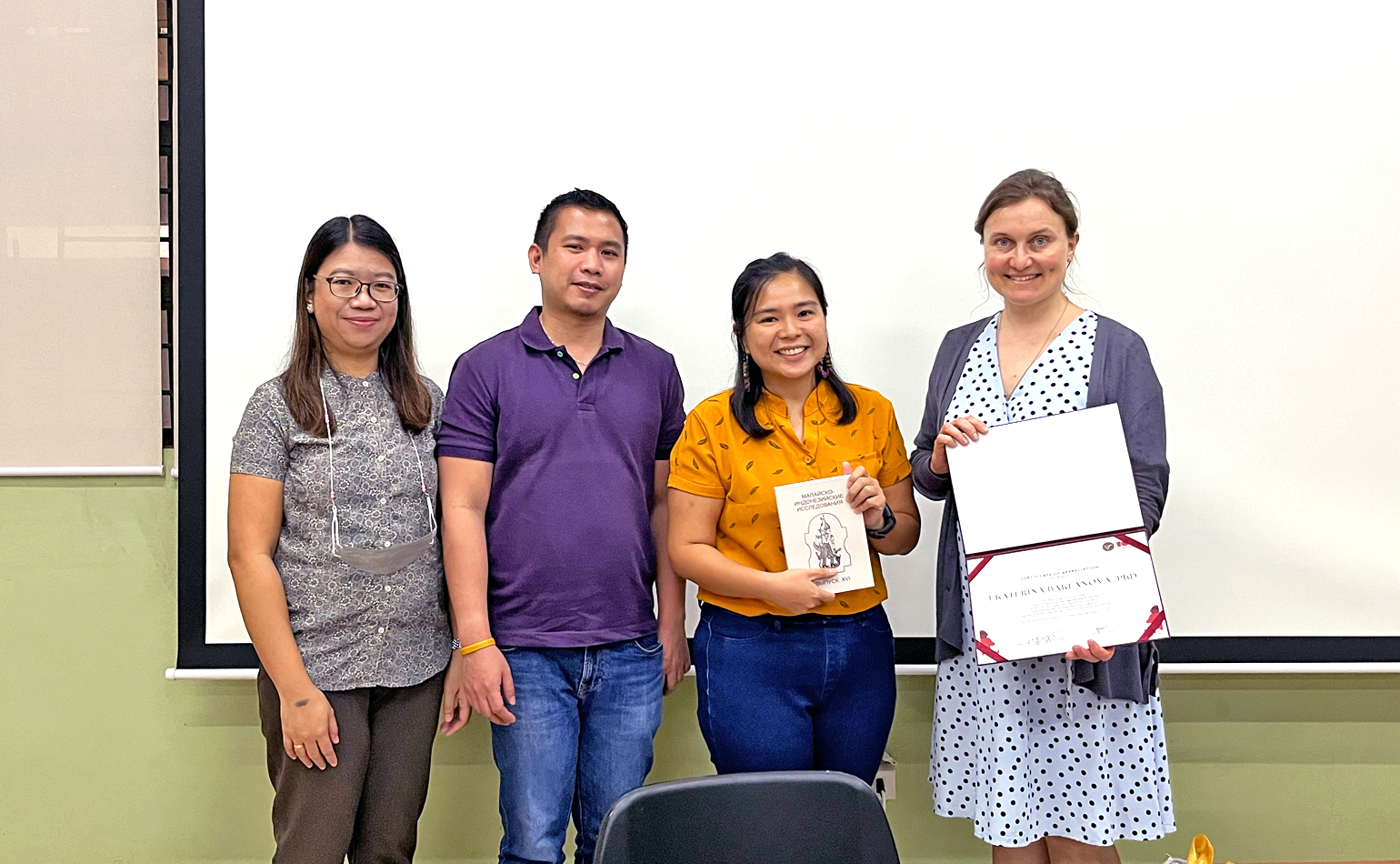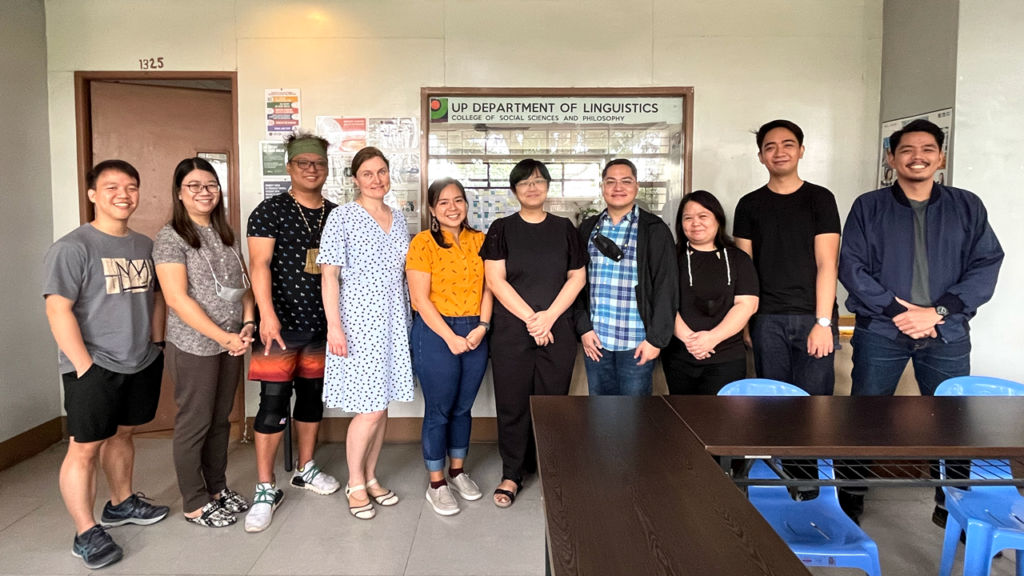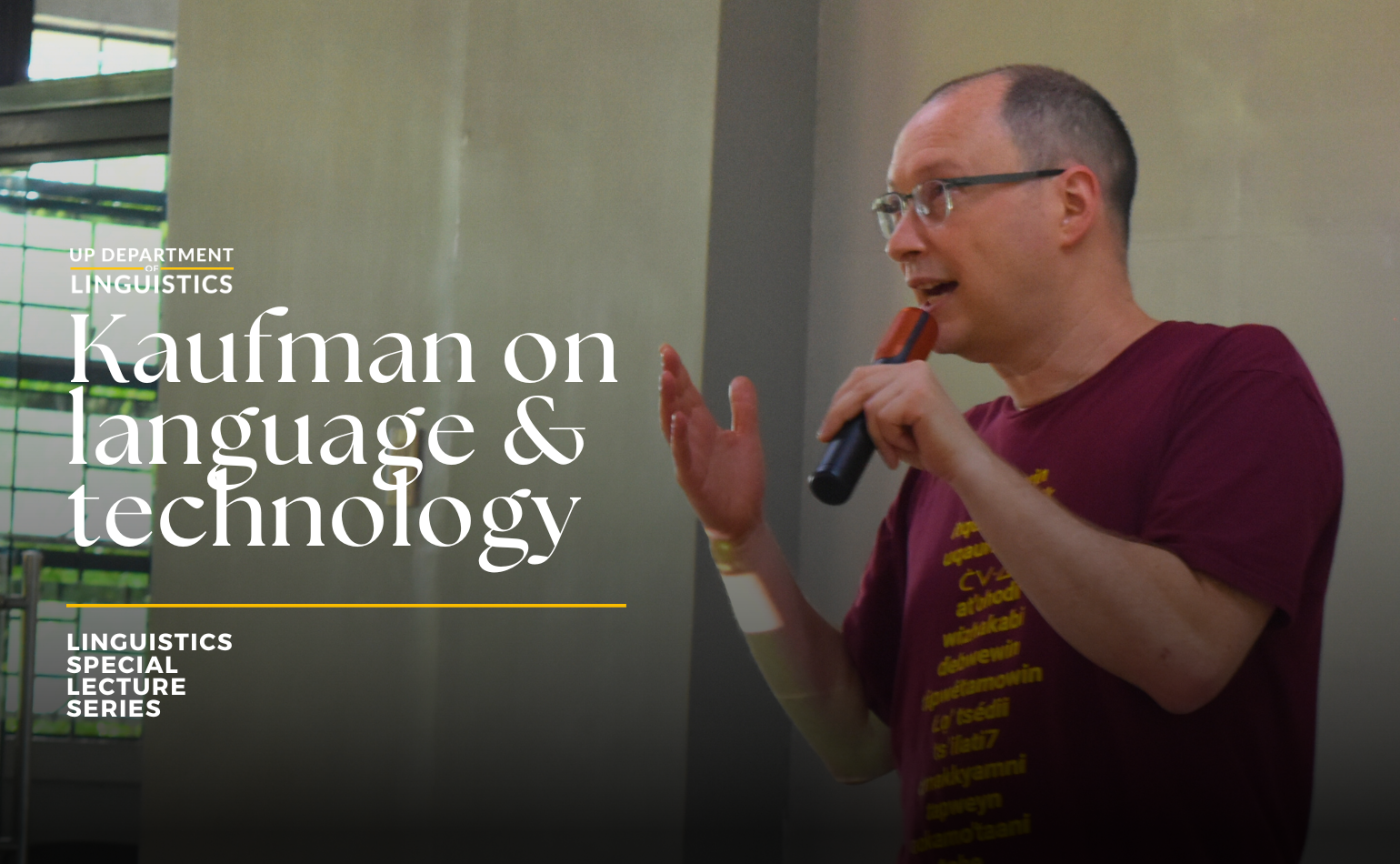
The 2023 Linguistics Special Lecture Series (LSLS) kicked off with a lecture on Tagalog degree systems by Dr. Ekaterina Baklanova, Senior Research Fellow at the Institute of Asian and African Studies of Lomonosov Moscow State University. The hybrid presentation, titled “Foreign Influence on the Tagalog Degree System,” was co-organized by the Department and the UP Departamento ng Filipino at Panitikan ng Pilipinas (DFPP), and was held last 27 January at CAL AVR (PH 1131) for in-person participants and was live-streamed on the Facebook page of the Department for online viewers.
Dr. Baklanova started her lecture by briefly discussing the history of language contact between Tagalog and two foreign languages, namely Spanish and English. She also mentioned several works which have previously documented the influence of these languages on Tagalog. She described the impact of Spanish on Tagalog in particular as “intensive” to “very intensive,” according to the borrowing scale proposed by Sarah Gray Thomason and Terrence Kaufman in 1988.
She preludes the presentation of her findings by explaining that her main research data was drawn from the Leipzig Tagalog corpora collection, which is comprised of Tagalog texts crawled from news blogs and newspapers. She categorized the expressions of degree in modifiers into two based on Igor Melchuk’s (1998) approach: (1) intensity category and (2) comparison category.
Data showing influence from Spanish (Sp.) and English (Eng.) on the Tagalog paradigm for adjectival degree were presented, with foreign origins seen in the marking of the moderative degree using medyo (from Sp. medio), the use of excessive elative markers masyado (from Sp. demasiado) and sobra (from Sp. sobra), elative degree markers kay (possibly from Sp. que) and as in (from Eng. as in), and the excessive elative marker super (from Eng. super). She noted that the corpus data suggests that some forms adapted from Spanish and English have become more frequently used compared to their native Tagalog counterparts. An example that she presented is the use of sobra and masyado, which were used more frequently in the corpus compared to the native Tagalog lubha. The first two words were seen in 3,600 and 1,900 instances, respectively, while lubha was seen only 396 times in the corpus.
In discussing Tagalog comparative constructions, Dr. Baklanova began by proposing that “PRM sa STD” (where “PRM” stands for parameter or the property or quality by which entities are compared or assessed, and “STD” stands for standard or the entity that another is compared against) appears to be–as Stolz and Stolz (2001) also suggests–the prototypical or most native comparative construction in Tagalog (e.g., Siya ay maganda sa ina. ‘She is more beautiful than the mother.’). She points out that Sp. mas was adapted very easily and added to this construction since there did not exist a word before PRM (parameter) in Tagalog before (so we would say Siya ay mas maganda sa ina).
Spanish impact on the Tagalog expression of comparison also extends to the use of kaysa / kaysa sa / sa (adapted from que), kumpara sa (from comparar), and pareho / parehas (from pareho). Mas, as Dr. Baklanova described, is especially interesting since it seems to have been grammaticalized in the language as evidenced by numerous instances of double-marking with other words (e.g. Siya ay mas maganda pa sa ina, where both mas and pa mark comparative degree). It is also interesting to note the word’s high frequency of usage (10,000 tokens compared to higit’s 500 instances in the corpus).
Another comparative construction, kumpara sa, Baklanova states, is “…not as much as Spanish influence as it is […] English.” She believes that it is a calque of the English phrase compared to. This shows an interesting combination of the Spanish kumpara and the Tagalog marker sa to directly translate word-for-word an English construction.
Dr. Baklanova ended her presentation by showing a table of the complete Tagalog adjectival degree paradigm and by saying that Spanish and English borrowings have complemented much to the degree paradigms of Tagalog, with the intensity paradigm receiving more impact from these foreign influences.
After the lecture proper, Dr. Althea Enriquez of the Departamento ng Filipino at Panitikan ng Pilipinas and Dr. Maria Kristina Gallego of the Department of Linguistics provided brief commentaries, where they remarked on the findings in the presentation. Dr. Enriquez, in her reaction read by moderator Asst. Prof. April J. Perez, reflected on the varying degrees of multilingualism and the monolingual study of language, discussed the internal and external motivations of language change and analysis, and explored the origins and usages of word borrowings in the degree paradigms.
Dr. Gallego, meanwhile, highlighted the difference in the nature of contact between Tagalog-Spanish and Tagalog-English, mentioning the higher number of fluent bilingual speakers of Tagalog and English since English is taught formally and more widely in our country’s educational system, as compared to Spanish, which was less accessible to the masses. She also emphasized the notion of varying profiles of speakers, since different speaker profiles also result in different degrees of word borrowing. Finally, the commentary ended with Dr. Gallego saying that we can be sure of one thing–Tagalog has been and continues to be influenced by language contact.
The Department and the DFPP look forward to continuing their collaboration with Dr. Baklanova on investigating the nature of language contact and borrowing in Tagalog and hope to expand the study further by also taking a look at other languages in the Philippines.
A recording of the hybrid seminar can be viewed at this link.

Published by John Michael De Pano



